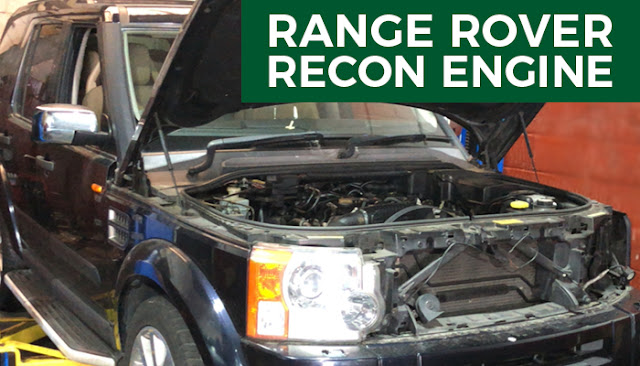Range Rover Velar Review
With Range Rover Velar show new looks and lashings of maxi, the Range Rover Velar resembles no other SUV on the business.
Stopping the distinction between the Range
Rover Evoque and Range
Rover Sport, the unavoidable issue is whether the
Range Rover Velar is simply sight to behold or deserving of the amazing Range
Rover identification?
Before we get investigating, we should begin with that
awesome moniker. The word Velar (articulated vel-ar) has some genuine history
since it was the name given to the model of the first Range Rover in the last
part of the 1960s.
The Velar likewise turns out to be the most
streamlined Range Rover ever with a drag coefficient of simply 0.32. Sleeker
than its kin, it's drop-dead exquisite and even highlights flush entryway
handles that jump out when you press 'open' on the key dandy.
Nearly as long as the Game, yet almost as low as the
Evoque, the Velar has impressive street presence with a long hood, short front
shade, since quite a while ago cleared back tail and steeply-raked windscreen.
Generally speaking, the impact is advanced and lively,
right away making the thick, roadster like methodology of some German producers
look predictable.
Step inside and the new Velar is a disclosure. Range
Rovers have improved no limit of late with the most recent In Control Contact
Master infotainment framework, yet the Velar goes above and beyond and grasps
the new moderate pattern.
The middle comfort is a smoothed out issue, absolutely
without catches, switches and dials. It's overwhelmed by two 10-inch superior
quality touch screens – part of the new In Control Contact Genius Pair
framework.
The upper touch screen can be part into three boards –
for route, media, and telephone – and the entire screen can be inclined up to
30 degrees.
The lower touch screen controls atmosphere control and
Territory Reaction, and only for a touch of assortment, catches serving as
dials are utilized to deal with everything from seat warming to Slope Plummet.
Conservatives will be satisfied to realize that the
revolving transmission regulator actually rises magnificently from the board
between the seats when the 'Start' button is squeezed, while the entire inside
seepages quality.
Notwithstanding its smooth profile, the driving
position is still appropriately elevated and there's an incredible inclination
of solace, space and light forthcoming. In front of the driver, there's an
(discretionary head-up showcase showing highlights, for example, speed and
essential route, in addition to a 12.3-inch customizable advanced dashboard.
It's roomy behind as well, yet not in the limo sense
found on the Velar's greater siblings, so travelers six-foot or over may battle
for legroom. On the in addition to side, the boot is a nice 673 liters,
ascending to 1,731 liters if the back seats are collapsed.
Valued between £44,830 – £85,450, there's a strong
decision of Range Rover velar engine accessible in petroleum and diesel, all
mated to a smooth moving ZF eight-speed programmed transmission.
Range Rover Velar Engine Offers:
·
Range
Rover Velar 2.0 L Turbo-diesel engine I4 which produce 180 PS (132 kW;
178 hp) at 4,000
·
Range
Rover Velar 3.0 L Twin-Turbo diesel engine V6 (D275) which
produce 275 PS
(202 kW; 271 hp) at 4,000
The range begins with a 178bhp and 237bhp variants of
a 2.0-liter four-chamber diesel motor, in addition to a 296bhp V6 twin-super
diesel.
There's likewise a 2.0-liter four-chamber petroleum
unit with yields of 247bhp and 296bhp, in addition to a 3.0-liter V6
supercharged motor which produces 375bhp.
I tried two forms of the Velar, fitted with the 247bhp
and 296bhp diesels. The more modest of the two is fit for a 0-60mph season of
6.8 seconds, a 135mph maximum velocity, efficiency of 49.7mpg and CO2
emanations of 154g/km.
Badge the D240, it's entirely decent and likely the
most ideal decision for execution and economy. Somewhat blunt at first, it
before long settles down and is all around protected, with great cruising
capacity.
The 296bhp V6 diesel (D300) is the pick of the motors,
giving amazing snort. It's quick (0-60mph in 6.1 seconds and a maximum velocity
of 150mph), while efficiency is a nice 44.1mpg and CO2 outflows are 167g/km.
The D300 is an example worth following, smooth and guttural with a lot of
force, significant distance driving is a sheer delight.
The Velar will drift along joyfully in Solace and Eco
drive modes, yet you're generally mindful that it's a genuinely large SUV with
regards to halting distances and cornering on additionally testing streets.
Notwithstanding, change to Dynamic mode and it will
put a grin all over. The suspension solidifies up and body roll is very much
controlled, the motor appears to be considerably more enthusiastic and it by
and large feels more nimble.
Normally, being a Land Rover on the most fundamental
level, it likewise has off-road drive modes – Grass-Rock Day off, and Grooves,
and Sand. It may not exactly coordinate a portion of its kin for rough terrain
boundaries, yet there's beginning and end you'd expect with lasting Area Rover
All Wheel Drive, Slope Plummet Control (HDC) and Territory Reaction as
standard.
Then, driver help highlights, including
Self-sufficient Crisis Slowing down (AEB) with Walker Recognition, Switch
Traffic Location and Path Keep Help, assisted the Velar with accomplishing a
most extreme five stars in Euro NCAP crash security tests.
It's useful as well. On the off chance that you need
to tow a horsebox, parade or trailer, it has a braked breaking point of
2,400-2,500kg, contingent upon motor decision.
The Range
Rover Velar isn't only the coolest looking 4×4 ever;
its advanced inside plan is completely a disclosure. In the event that you have
the money to sprinkle out on an extravagant SUV that dares to appear as
something else, this is the vehicle for you.





Comments
Post a Comment